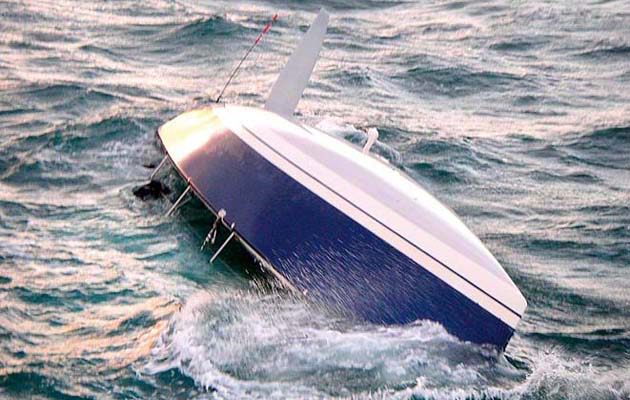We investigate the causes of keel failures and find some worrying reports of near-misses
To contemplate the loss of your keel is to think the unthinkable. Yet in recent years there have been several cases that have reminded us that this worst-case scenario can and does happen.
Many of the recent incidents have been aboard raceboats, often fitted with high-performance keels that push the boundaries of design and technology.
But the loss of the keel aboard Cheeki Rafiki, which became the subject of an intensive search last year, sent shockwaves through the sport. This was a standard Beneteau 40.7, a boat that is anything but high-tech. With around 800 afloat, it is a modest design with a reputation for being a robust and reliable workhorse.
Furthermore, the 40.7 is not only popular, but is typical of many other cruiser-racer styles around the world. Far from being extreme, this was a tragedy that claimed four lives aboard a run-of-the-mill cruiser-racer and struck a chord with thousands of sailors.
It wasn’t the first case of its type, however. In May 2013 a Bavaria 390 lost her keel 650nm north-east of Bermuda while on passage back from St Maarten to the Azores. In this incident the two-man Danish crew were rescued from a liferaft by a Finnish navy ship.
Before that there was the case of Hooligan V, a production raceboat that lost her keel in 2007 and claimed a life. In 2005 a Bavaria Match 42 lost hers as the internal structure pulled through the bottom of the boat. In the same year Moquini, a Fast 42, lost her keel off South Africa with the loss of six crew.
Indeed, so concerned is the sport’s governing body, ISAF, about the incidences of keel failure that it has formed a Keel Structure Working Party to investigate the issue. Part of the group’s initial work was to develop a database of the reported failures. Currently, the list includes 72 cases since 1984, and in those 24 lives have been lost – a small number perhaps when compared with the many thousands of boats that have been built over this period, but unacceptable nonetheless.
The trouble is that these are only cases where the worst has happened and the keel has parted company with the boat. It is frequently difficult to establish the cause of failure, and particularly to separate a shortcoming in design or manufacture from a human error such as a grounding. In a world where online forums spread gossip and rumour at the click of a mouse, getting to the truth can be especially tricky.
Next: Damage to your keel when you go aground




